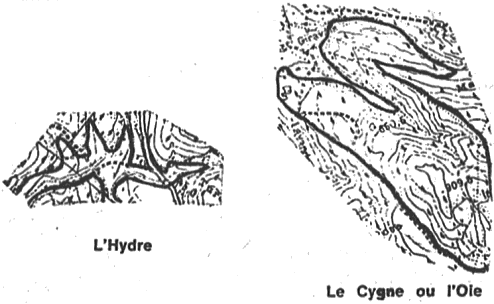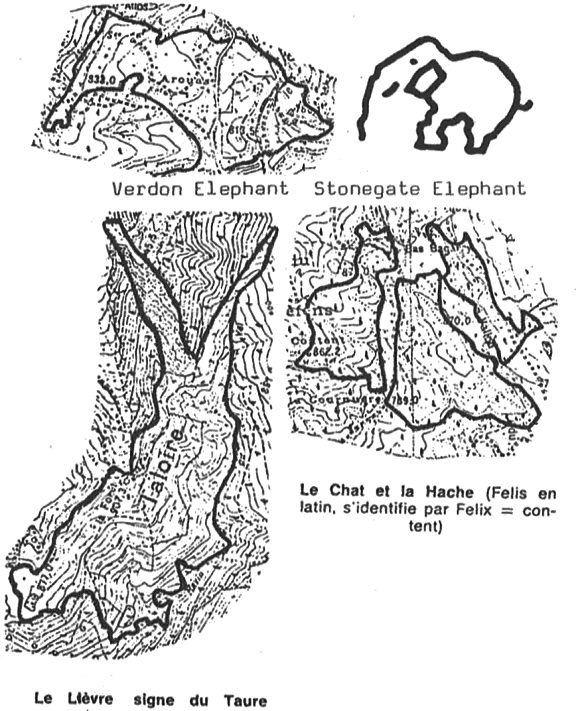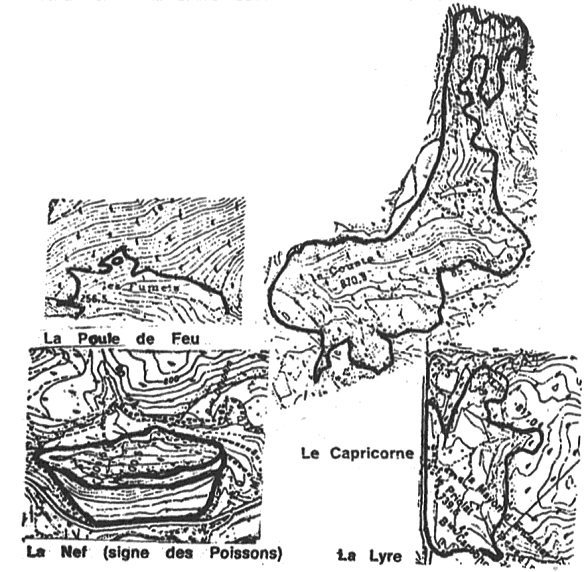
Journal of Geomancy vol. 3 no. 4, July 1979
{103}
This review is printed as artwork in the JoG and is obviously copied from another publication.
You don’t have to poke your head in a microwave oven or work at the US embassy in Moscow to be zapped. Since World War II, Americans have been bathed in microwaves from a variety of sources: TV, radio, CB, and long distance phone call transmission, as well as a multiplicity of military uses including radar, satellite communications, and missile guidance systems. Largely because of the enormous military and corporate investment in microwave technology, the authorities for four decades have sat on evidence that microwaves may cause cataracts, leukemia, heart failure, genetic defects, and loss of hair, memory, appetite, and intellectual capacity. Brodeur cites a number of bizarre cases ranging from the mysterious high rate of arteriosclerosis among the inhabitants of a Finnish district directly across from a Soviet microwave installation, to the unusually high incidence of cancer among technicians working on the Air Force/Boeing Electromagnetic Pulse Project, intended to simulate the effect of high energy pulses from nuclear explosions on missile guidance systems. In other words, microwaves make PBB seem like Ovaltine.
For years US scientists scoffed at Soviet research that indicated microwaves were dangerous, and steadfastly held to the more or less arbitrary safety standard of 10 milliwatts per square centimeter, one thousand times higher than the Soviet standard of 10 microwatts per square centimeter. As soon as Americans like Dr. Milton M. Zaret, under contract to the US military, came up with data that confirms Soviet findings, their work was abruptly terminated.
Brodeur comes to the conclusion that microwaves are by now so much of an integral part of American technology that even were they conclusively shown to be deadly as preliminary research indicates, it is probably too late to do anything about it.
In recent years, the sport of zodiac hunting has become relatively popular and has resulted in the discovery of many Terrestrial Zodiacs in Britain, from Kingston to Preseli via Holderness and Nuthampstead to Cuffley and the Pendle Zodiac. A burgeoning literature ranging from duplicated handouts to letterpress books has emerged, and research into new and older zodiacs continues apace. The Journal of Geomancy has been the place where many zodiacs received their first public airing.
Strangely, very little zodiacal work has emerged from other countries. Whilst Britain now possesses what amounts to a school of thought on the various aspects of geomancy, other countries are still only represented by individuals who are often isolated completely from each other. Similarly, although British research is self-reinforcing (and self-funding, depending not a whit upon public money like the fossilized core of orthodox archaeology), foreign language works are usually not available, nor often are they even known about. The IGR over the last four years has been recovering the lost and forgotten works of German geomancy, and has published part of the corpus of works of Heinsch and Gerlach as well as the writings of Mössinger and Sieber. Other material, including the work of Teudt, Hamkens and others is in the pipeline, as well as a book on the subject by your editor and Prudence Jones. However, to return to the theme of zodiacs, the work of Weysen in France only seven years ago is still little known.

In a monumental book L’Ile Des Veilleurs published by Arcadie in Paris in 1972, Alfred Weysen wrote on various geomantic, alchemical, symbolic and masonic themes connected with the Holy Grail and the legendary Treasure of the Templars. Such a book, typical of the French-speaking school of mystical history, would never be considered by an English publisher, because of the real difference in approach between the English-speaking and the French-speaking ‘schools’ of esoterism. {104}
This aside, the book contains what is the only published terrestrial zodiac to be found outside England or Wales. It seems similar to the zodiacs described by the late Lewis Edwards, and, indeed his zodiac and Maltwood’s are the only two mentioned in the Bibliography of ‘Sacred Geography’ at the back.
As L’Ile des Veilleurs is impossible to get in England, we reproduce here a few of the strange effigies Weysen found at and around Verdon in France. Of special interest is an elephant which resembles that discovered by Mike Collier near Eastbourne in the Stonegate (Sussex) Zodiac. Other oddities are reproduced below along with the Stonegate Elephant.


Subtitled ‘Aligned ancient sites: a new study with field guide and maps’, this book is the first comprehensive study on leys since the work of Alfred Watkins over fifty years ago. Devereux and Thomson have travelled the length and breadth of the country meticulously recording and checking alignments.
The book is divided into two sections: an introduction giving the history and philosophy of ley hunting; and the leys themselves, over 40 concrete examples to fox the orthodox archaeologists to further convolutions of crazy logic. The introduction details the ideas of Watkins, comments on his predecessors, the mark points, statistics and the attitude of the fossilized core of archaeology. The precedent, accepted by the orthodox, of lines in Bolivia which fulfil the criteria for leys whilst being visible on the ground, is presented, and a solid case is made. Now we have to wait for the fatuous remarks of the ‘dots at random’ Antiquity hacks. There will be some spluttering and choking over port in hall when they see this book!
For the beginner, the mechanics of map work is ably explained with helpful diagrams, with an emphasis, of course, on fieldwork.
The leys are grouped by regions, and each is illustrated by a map and photographs, and accompanied by a brief informative text. Each O.S. sheet is detailed, so that the sceptic may have the opportunity of testing the accuracy of the work (which is beyond question).
This book is without doubt the most significant publication on leys since Watkins and as such deserves a place in the library of every geomant. The evidence so ably displayed here must surely soon have some influence upon the orthodox who so far have chosen to unscientifically ignore all work on leys. The latest energy work of TLH’s Dragon Project is hinted at in the book, and it is through this, understandable by physicists and not the ‘arty-crafty’ woolly archaeological school of research, whose minds are steeped in psittacine regurgitation of past masters, that the breakthrough is taking place. Devereux and Thomson have produced a major work, and Watkins would have been proud of it.